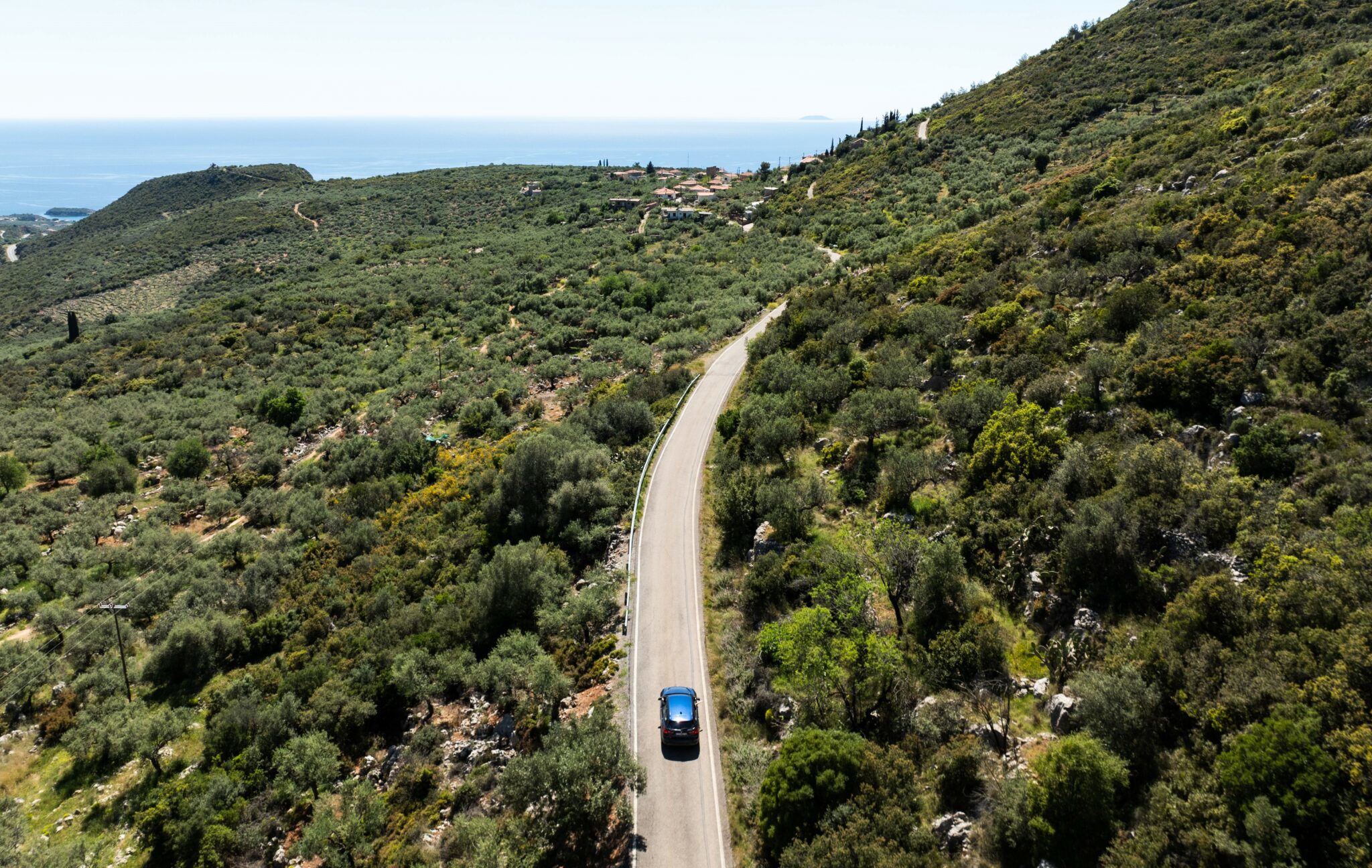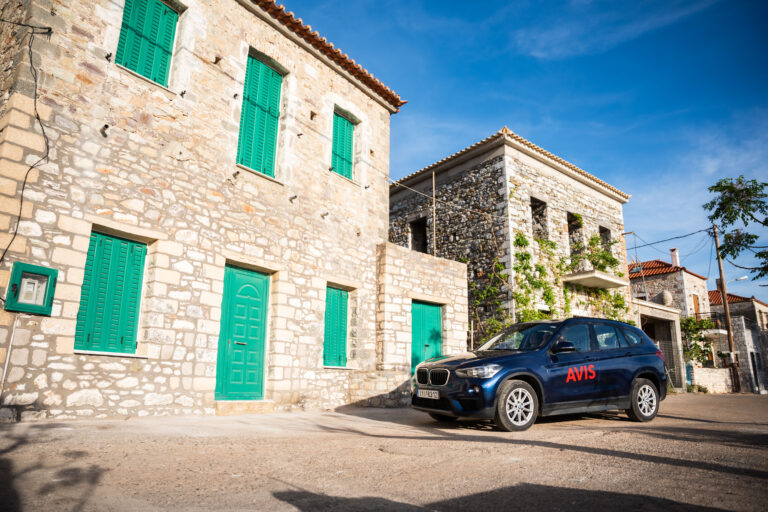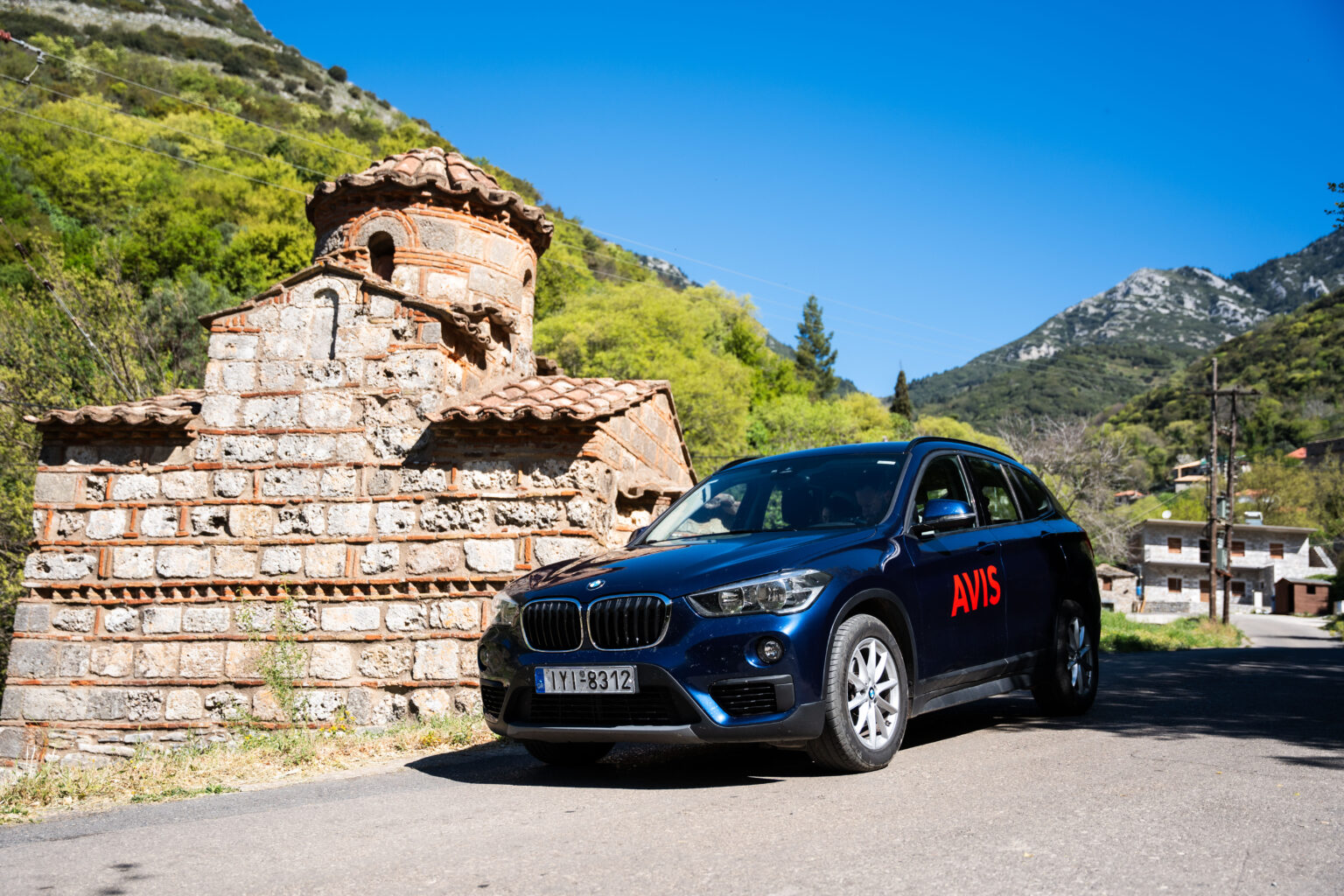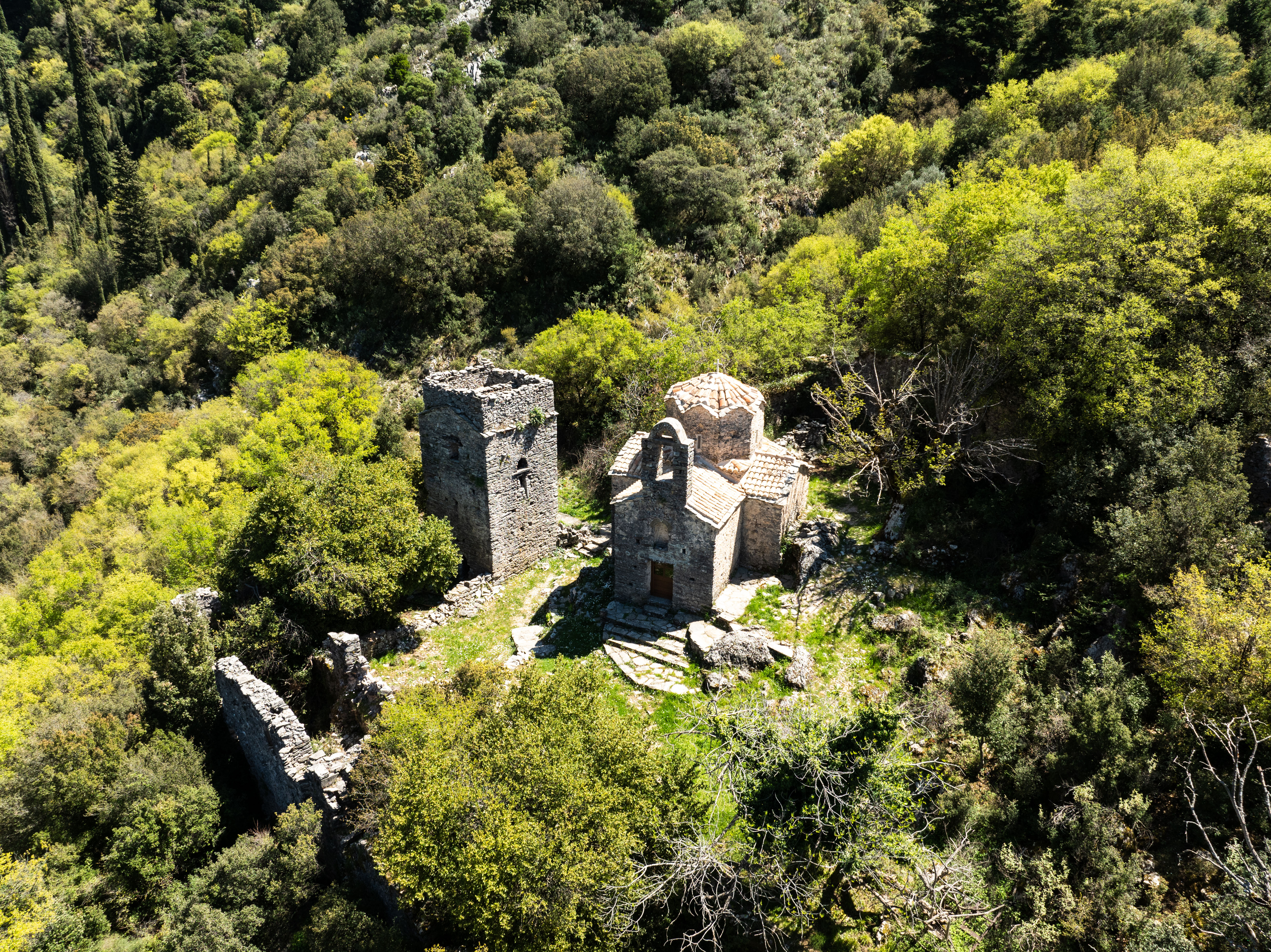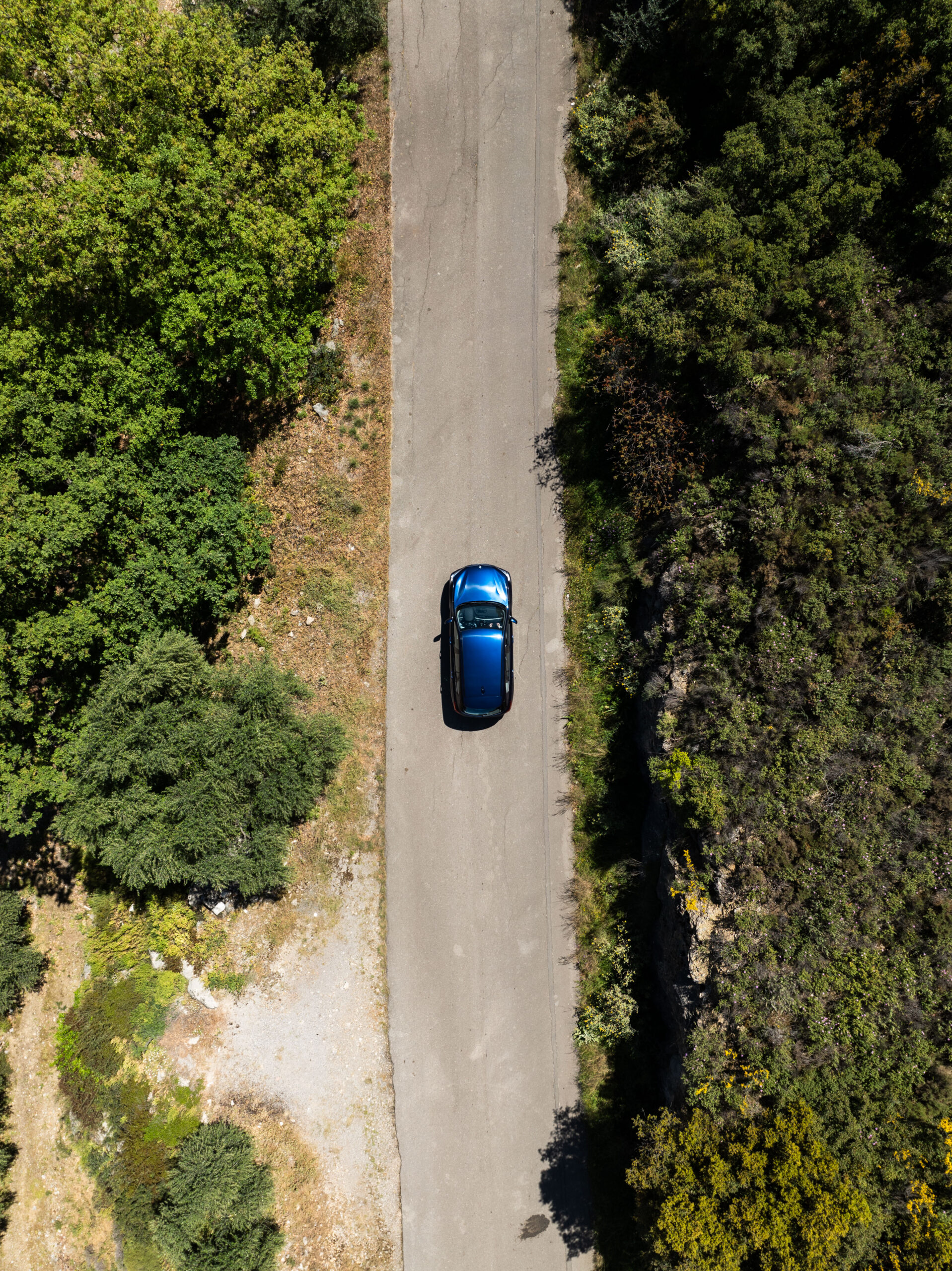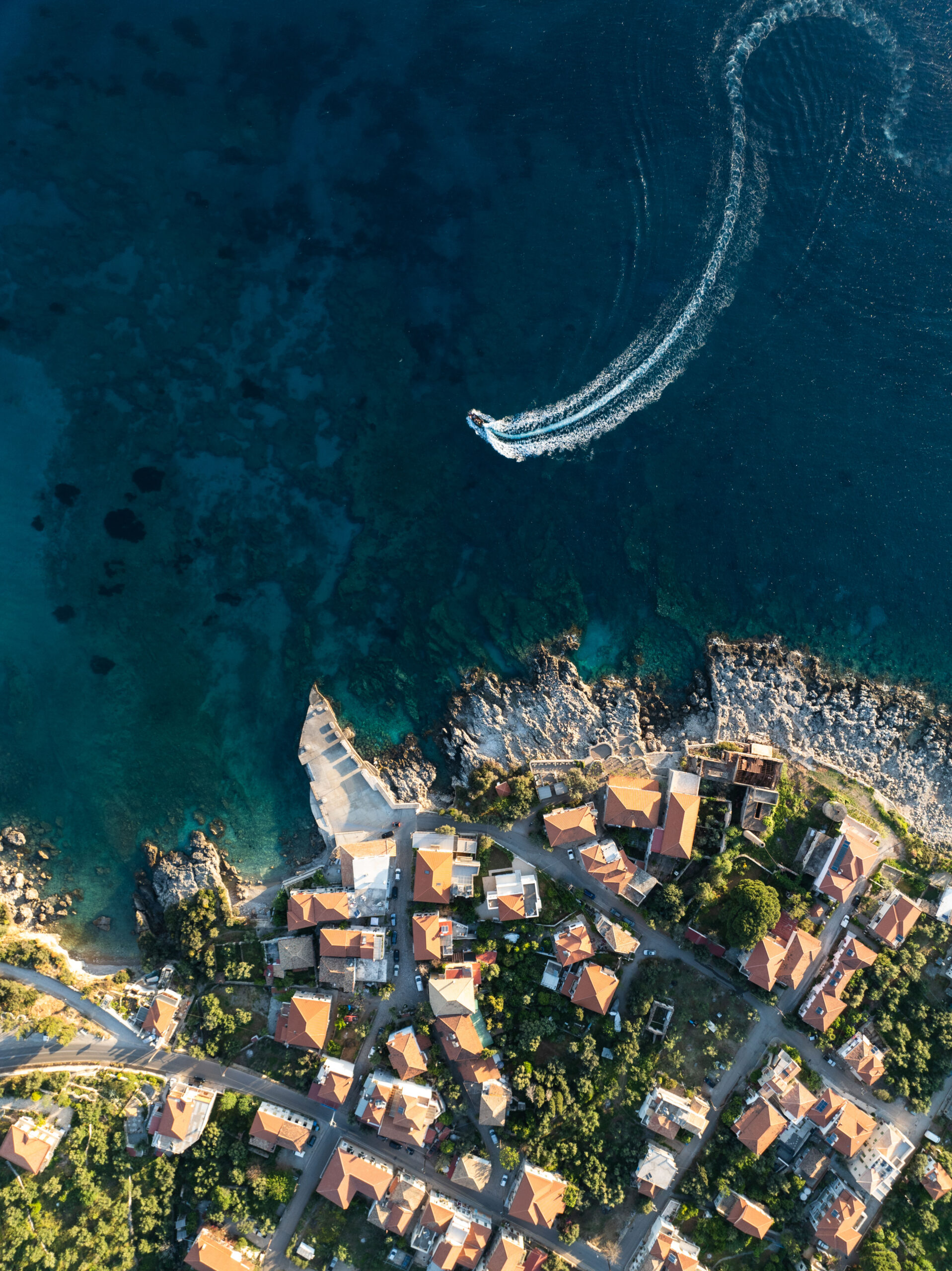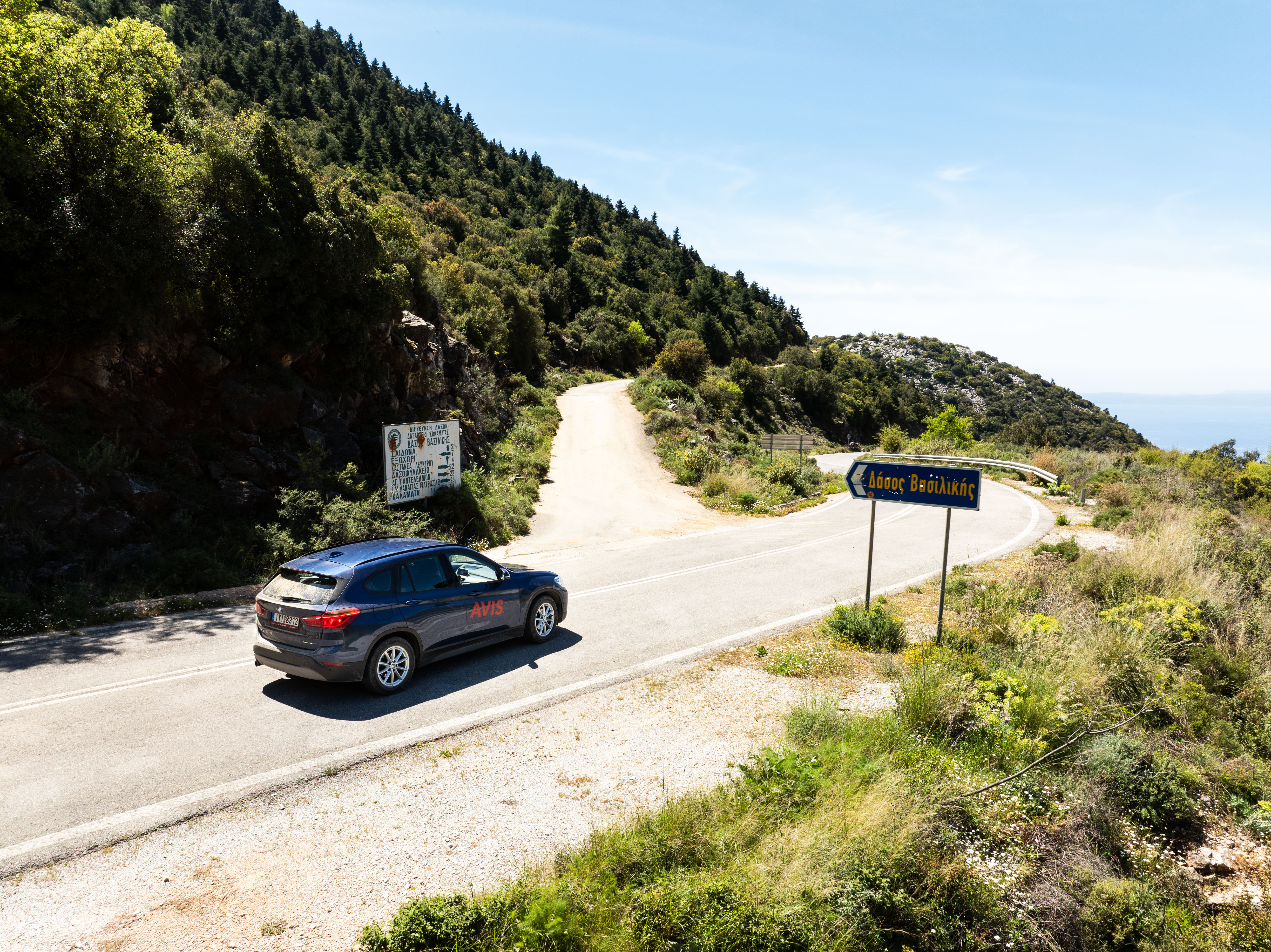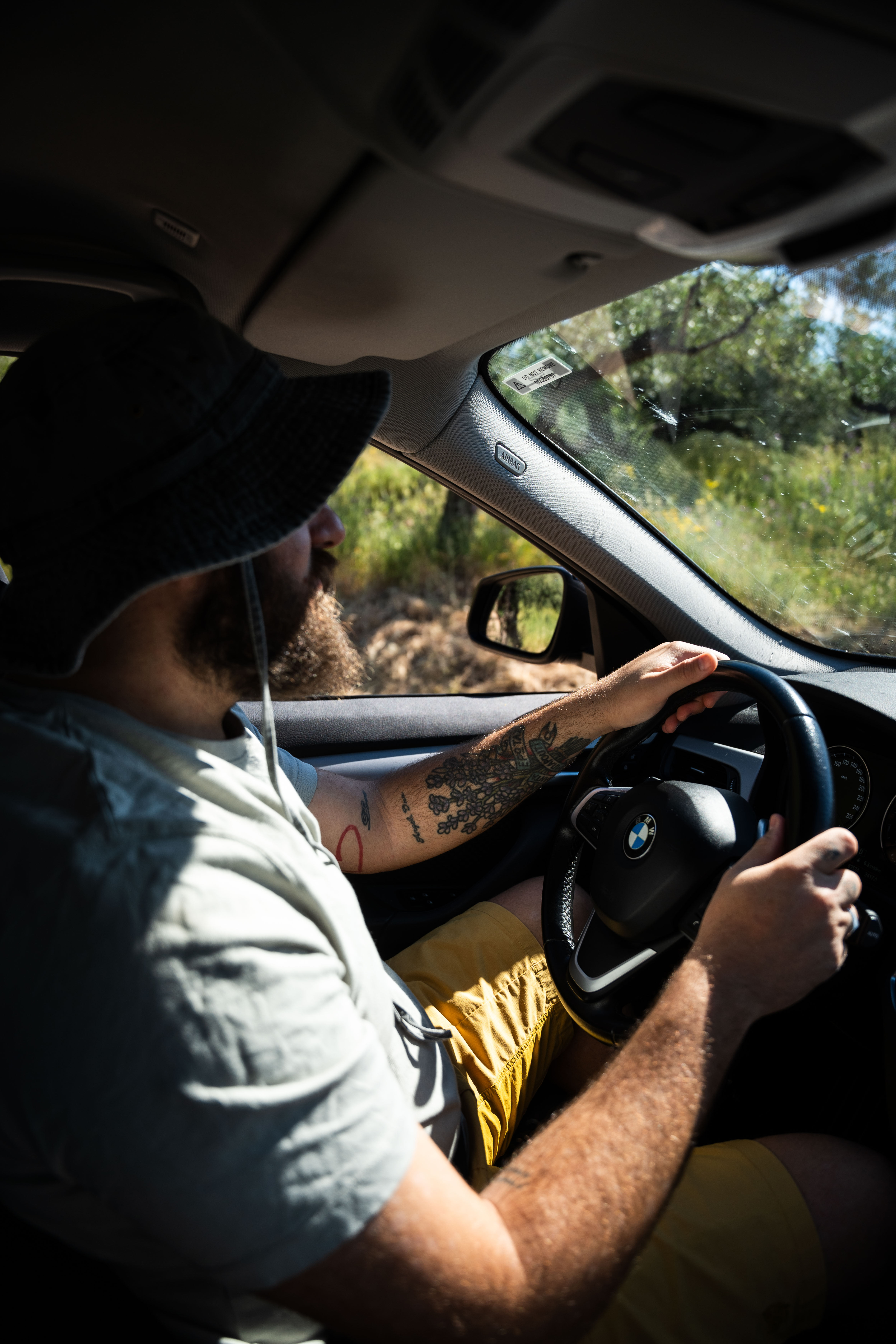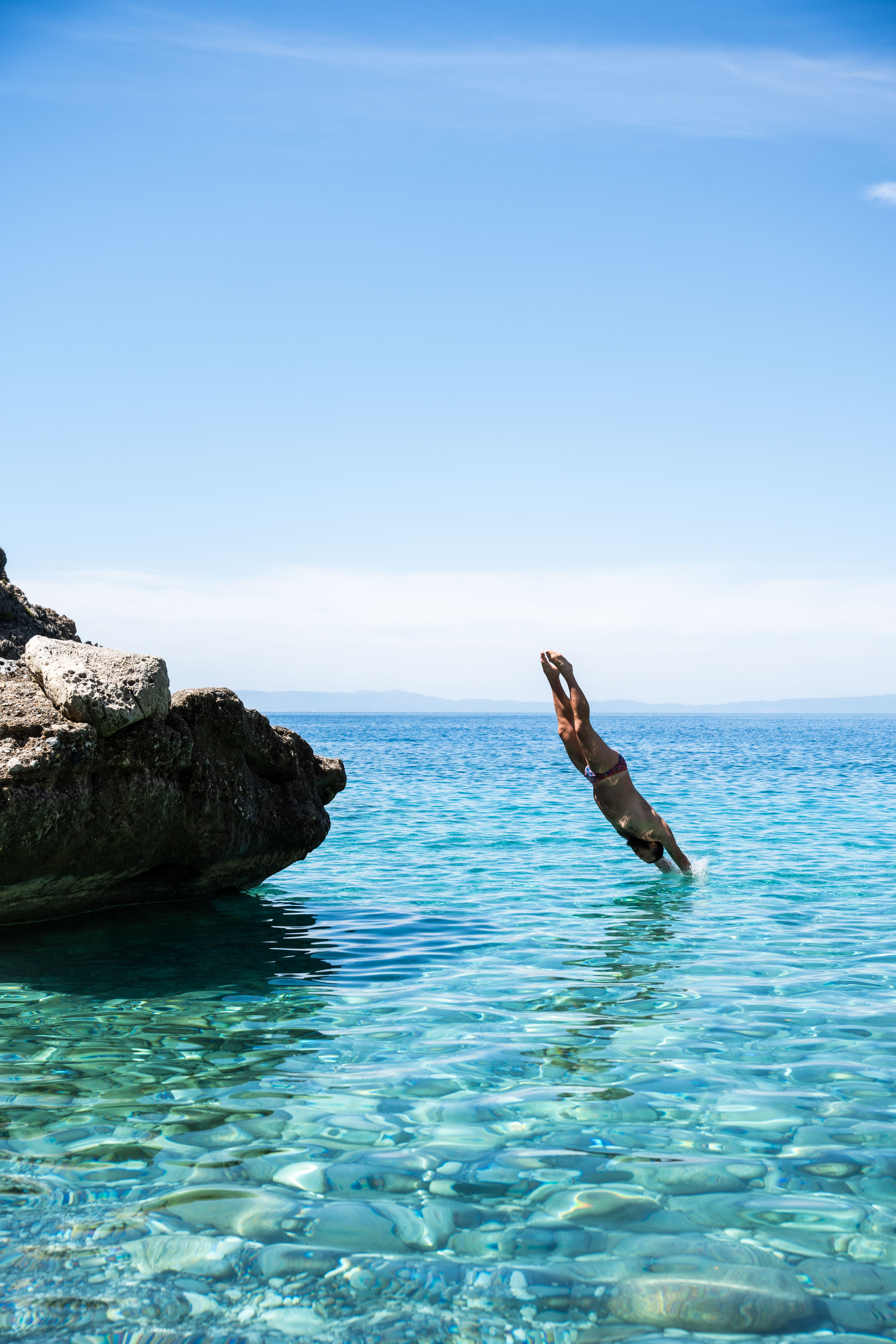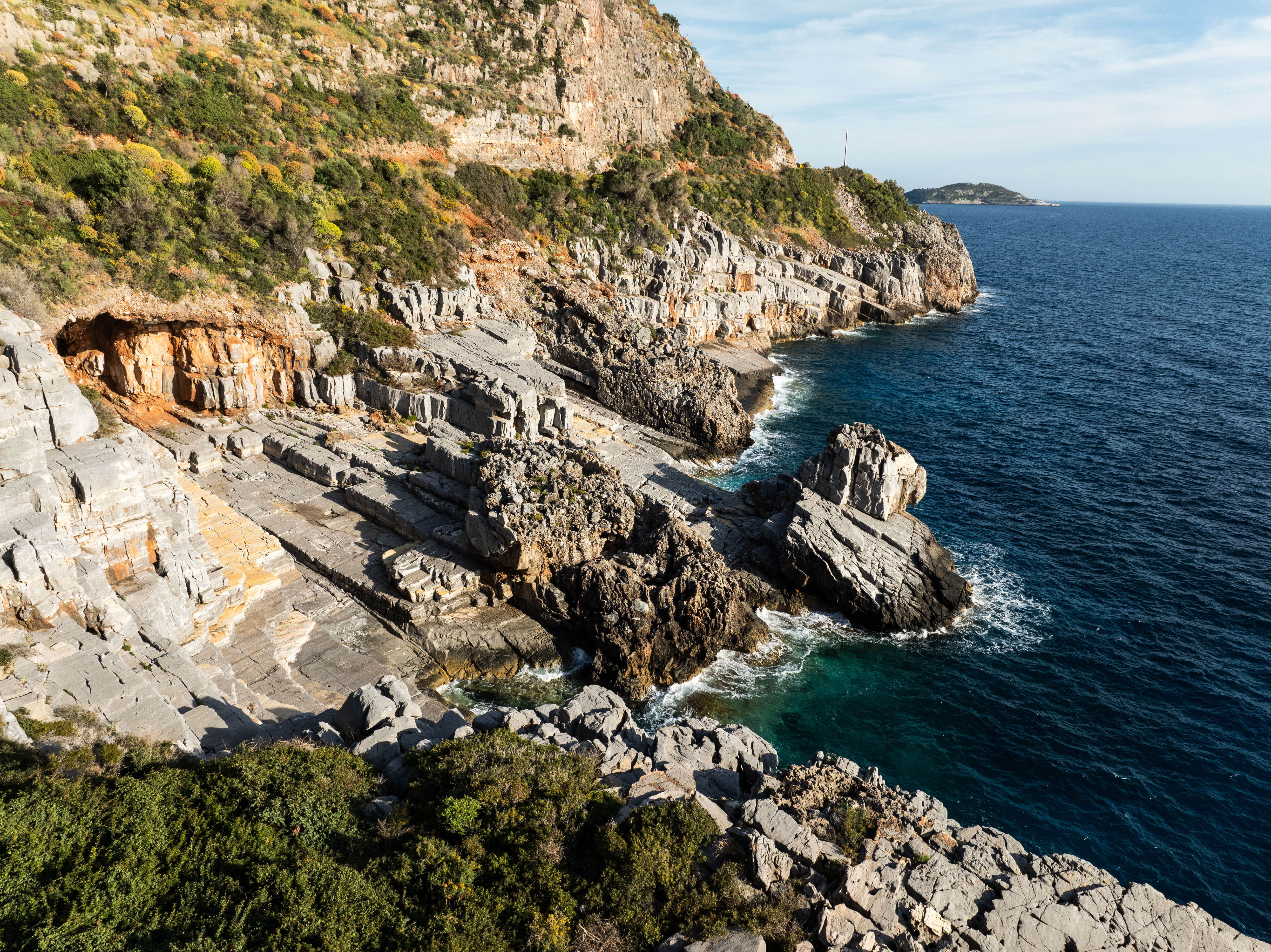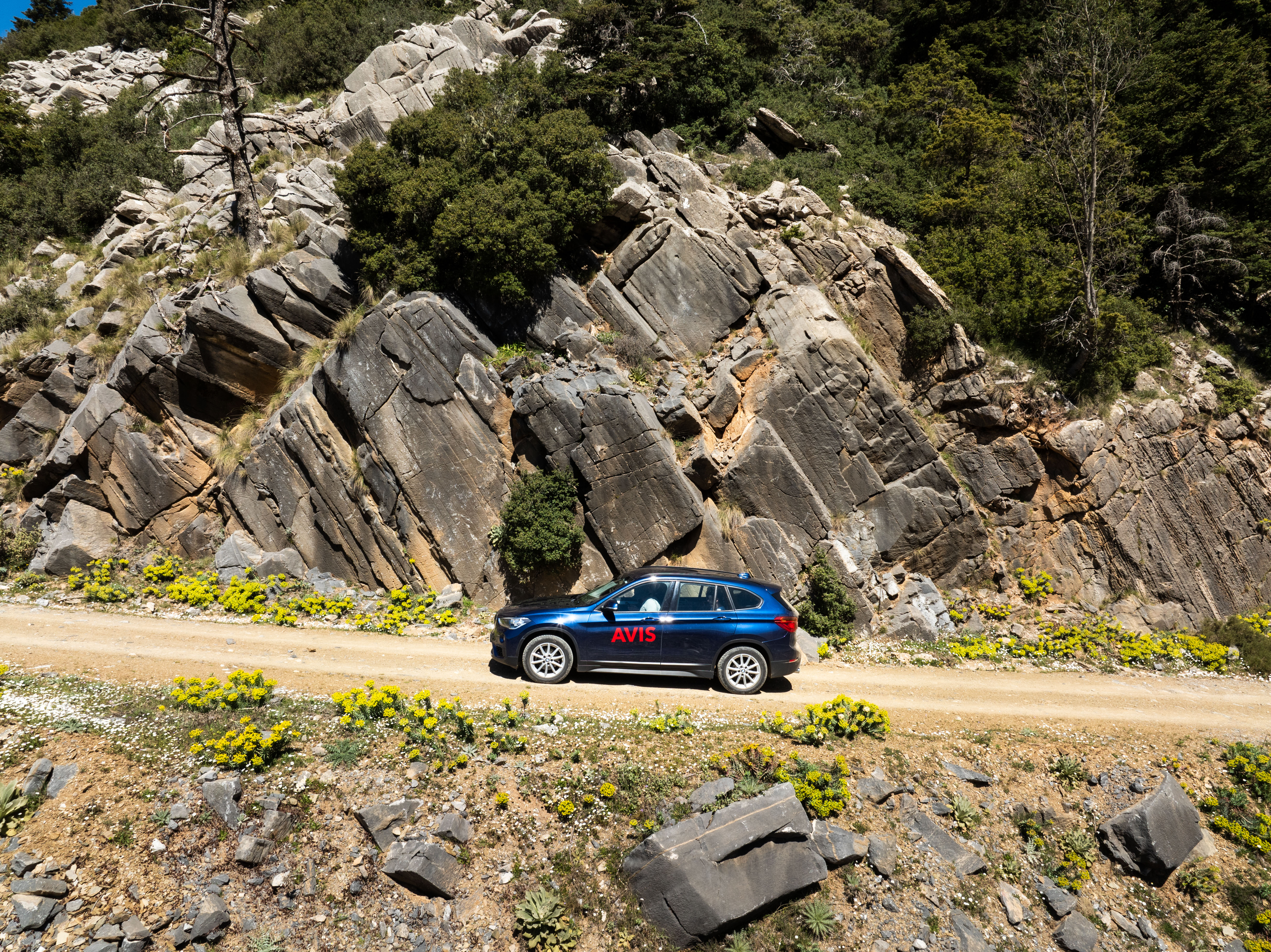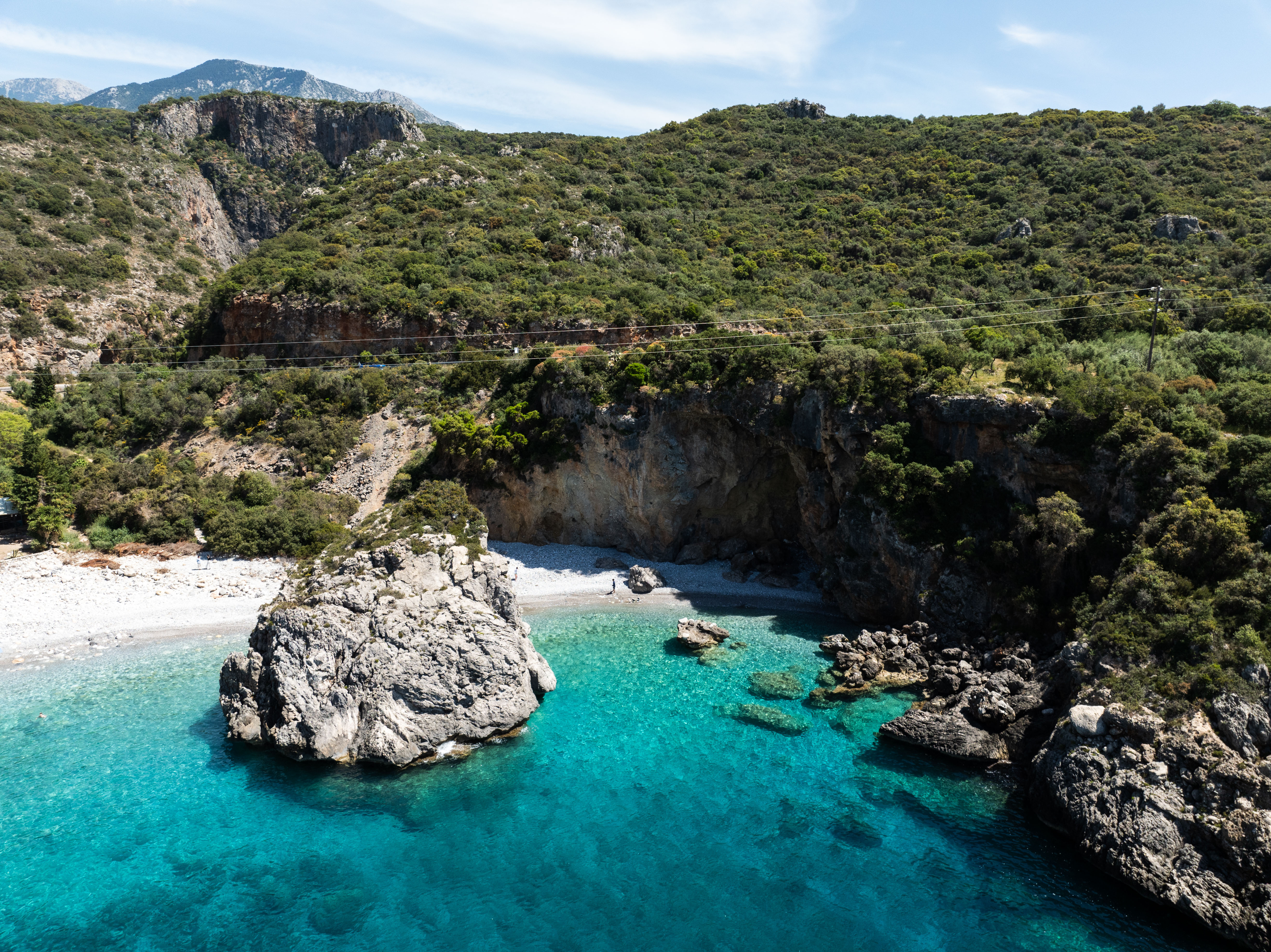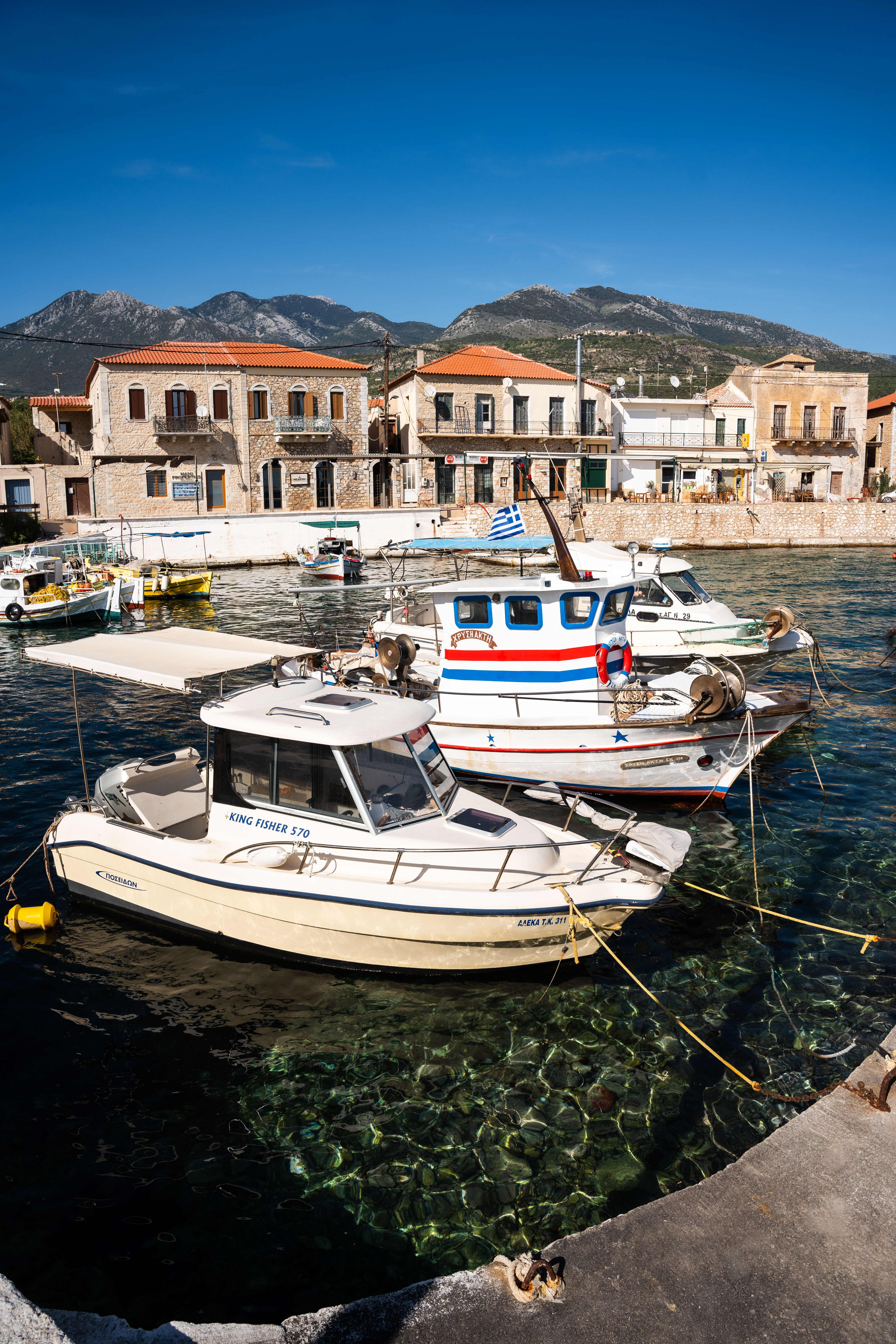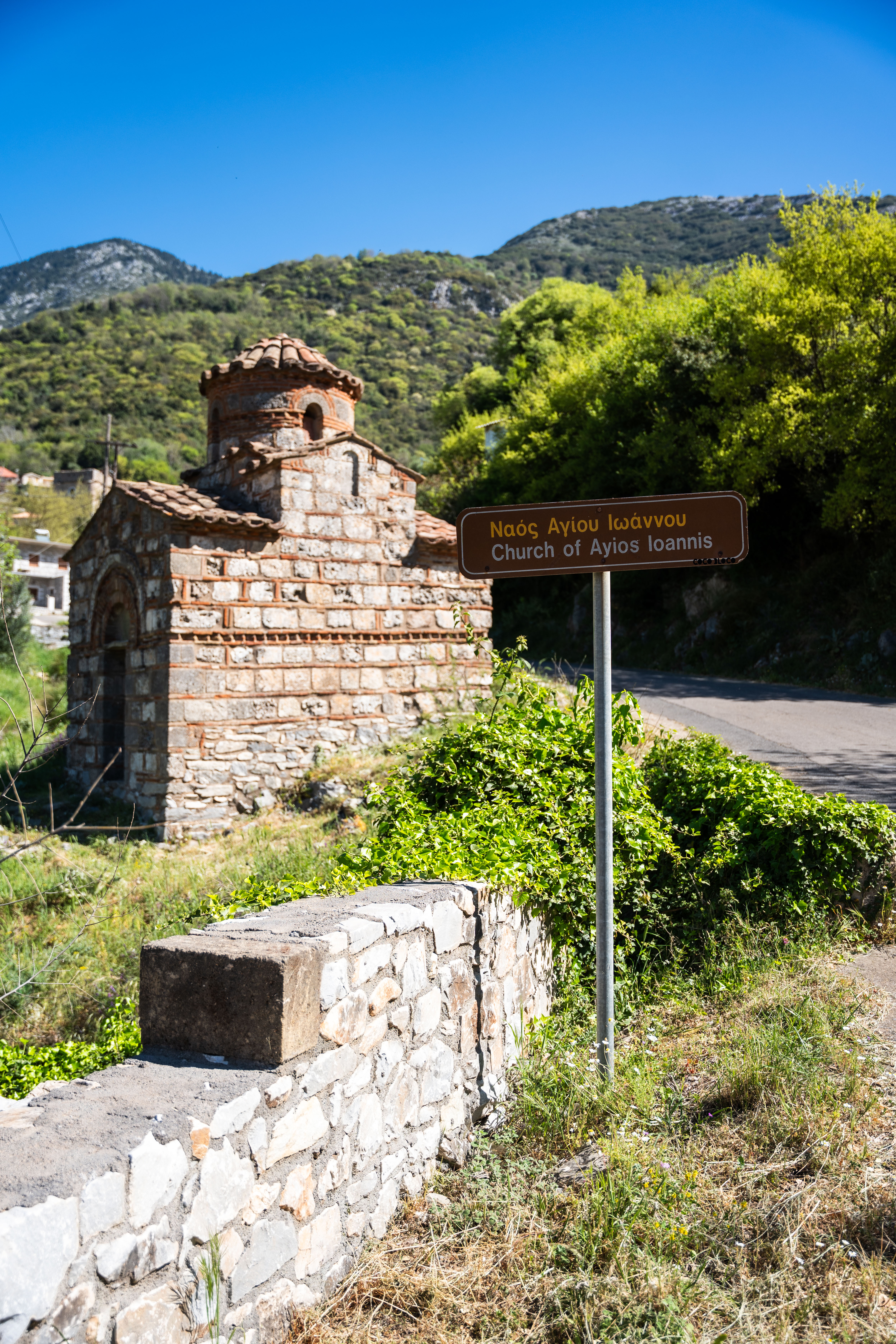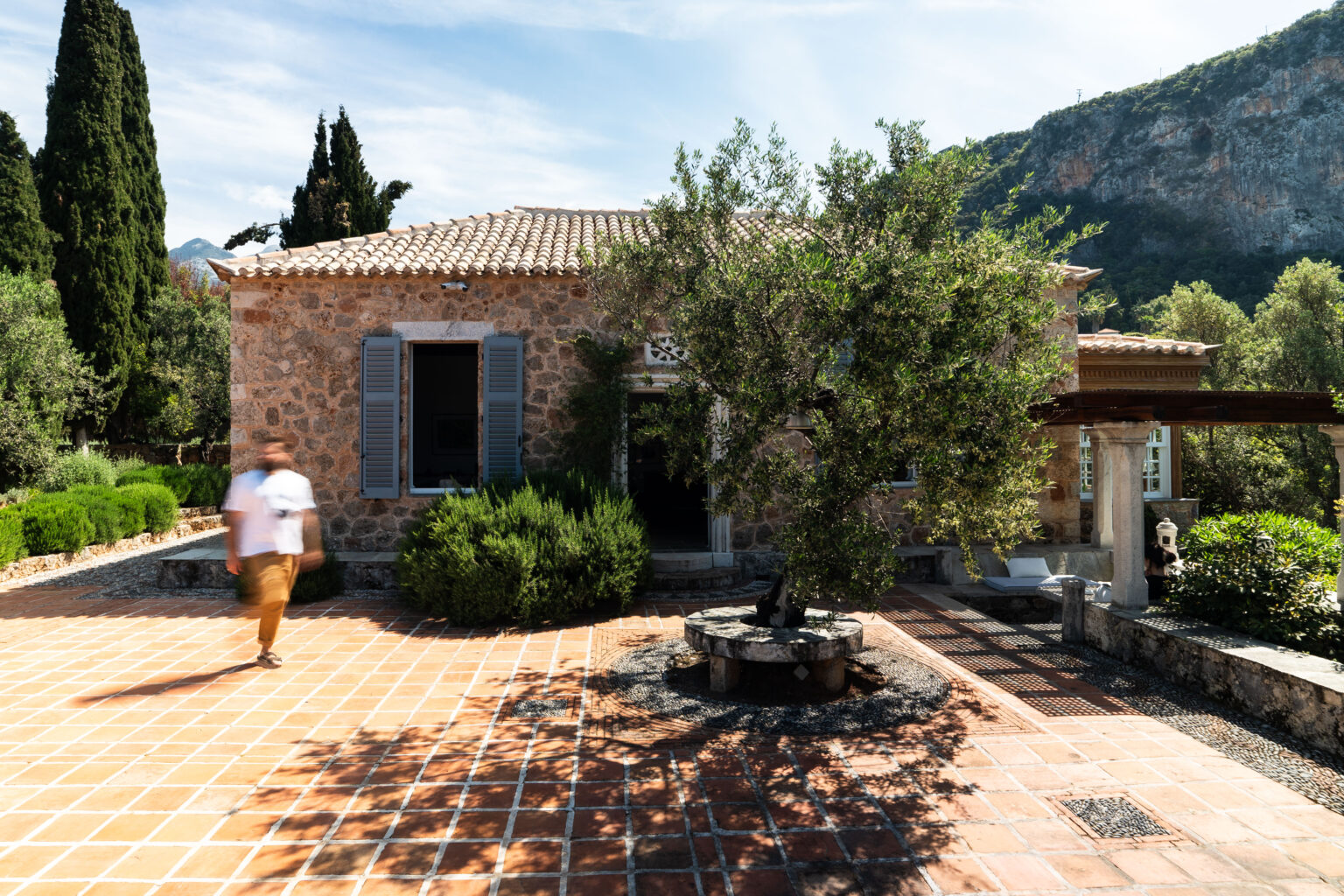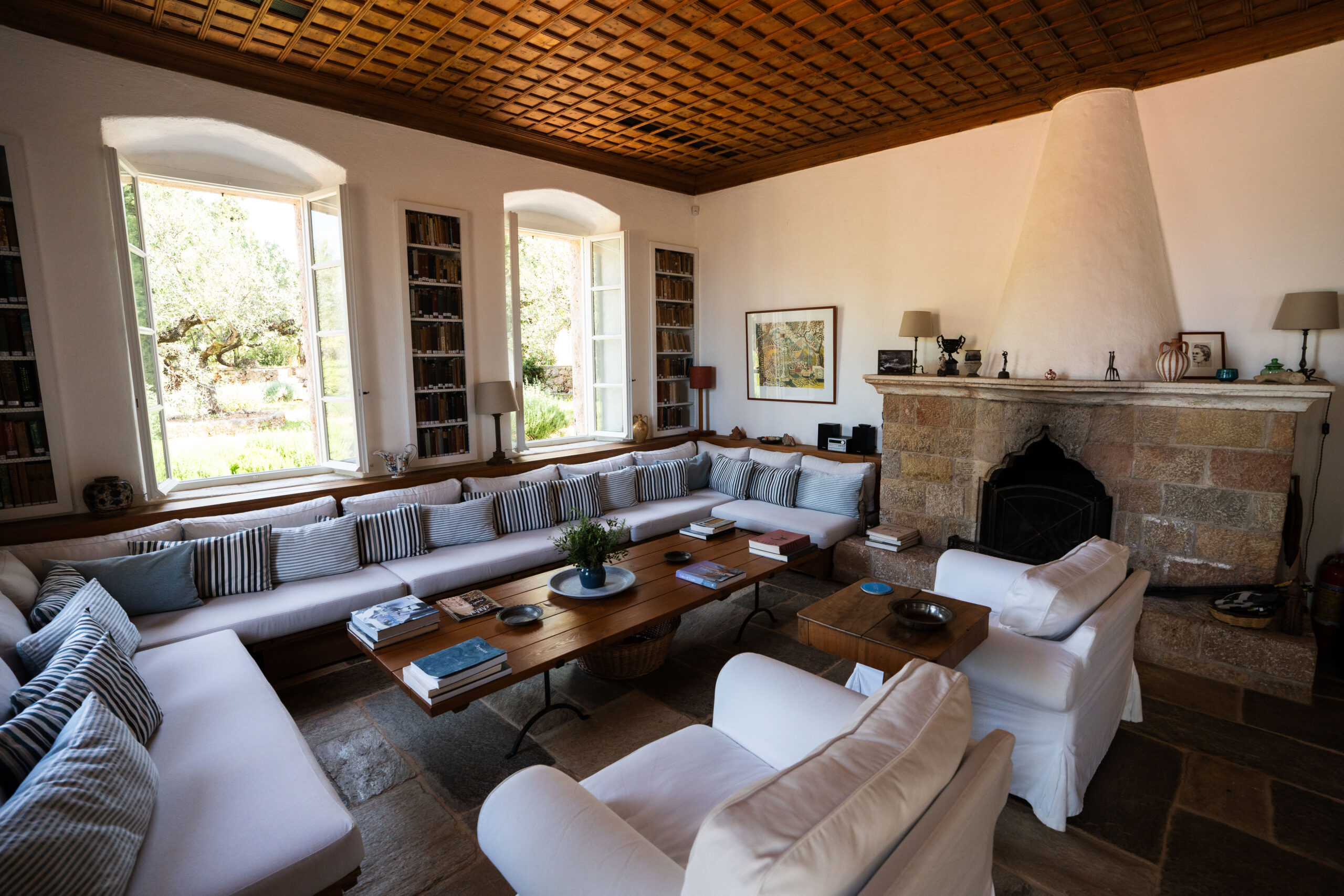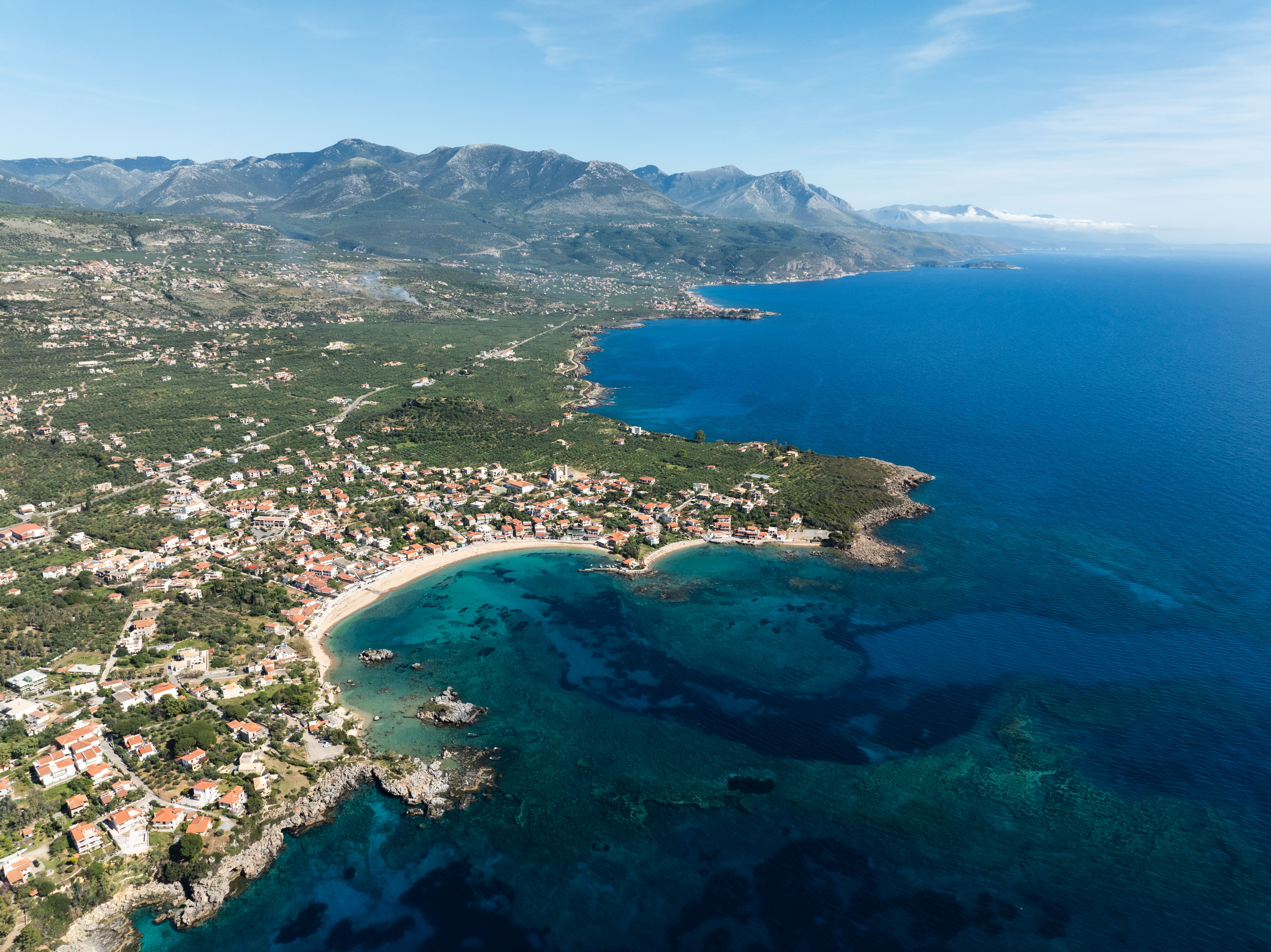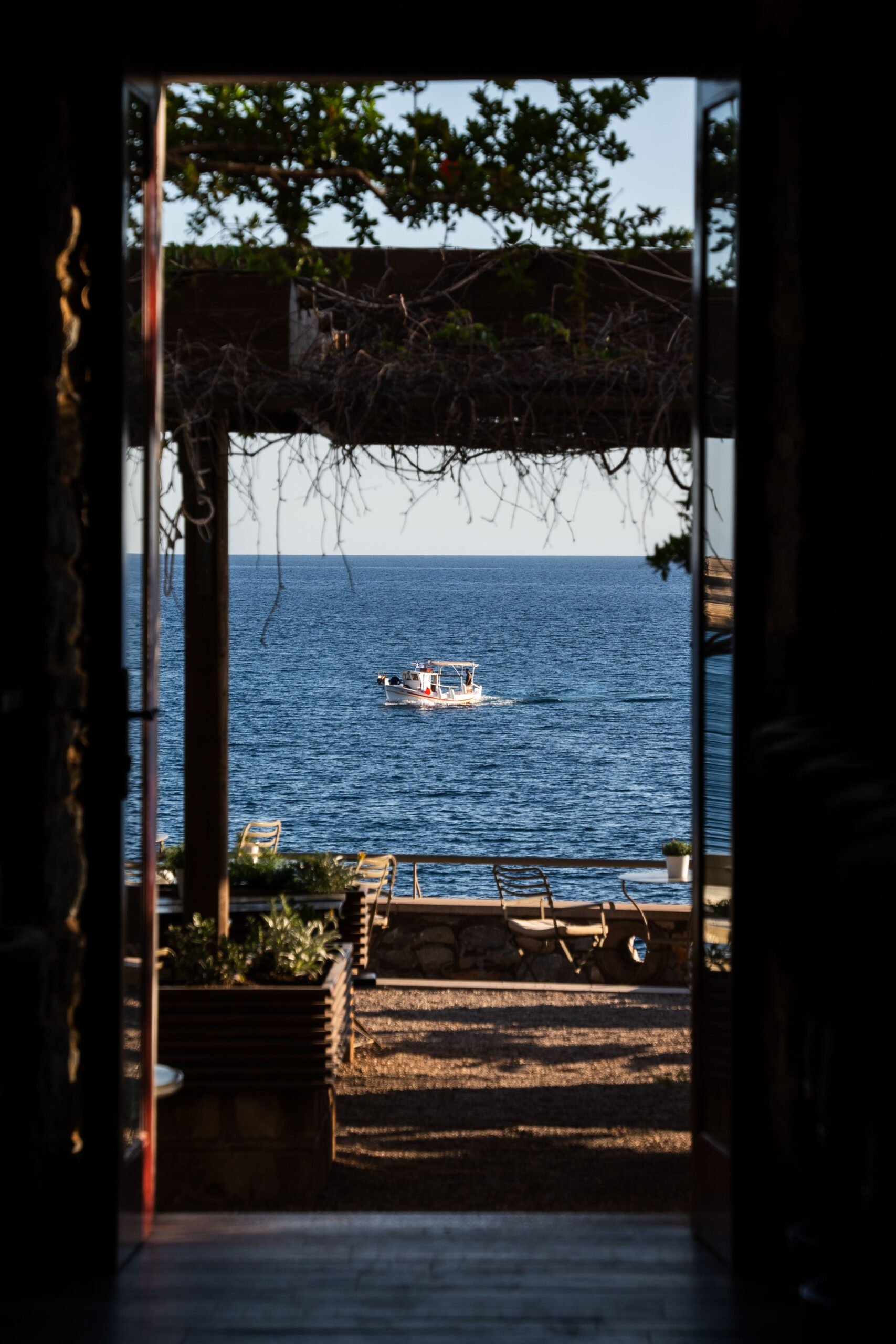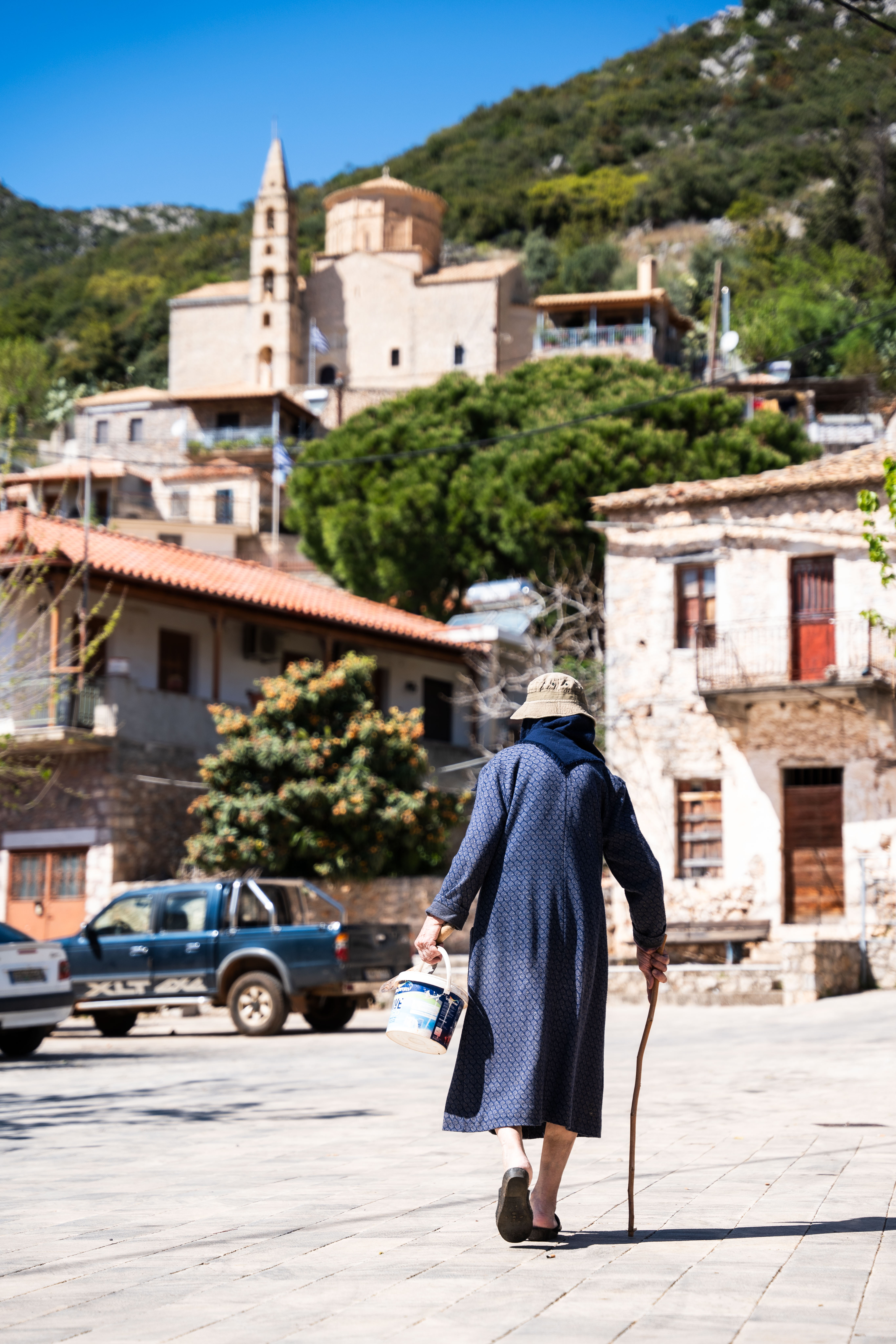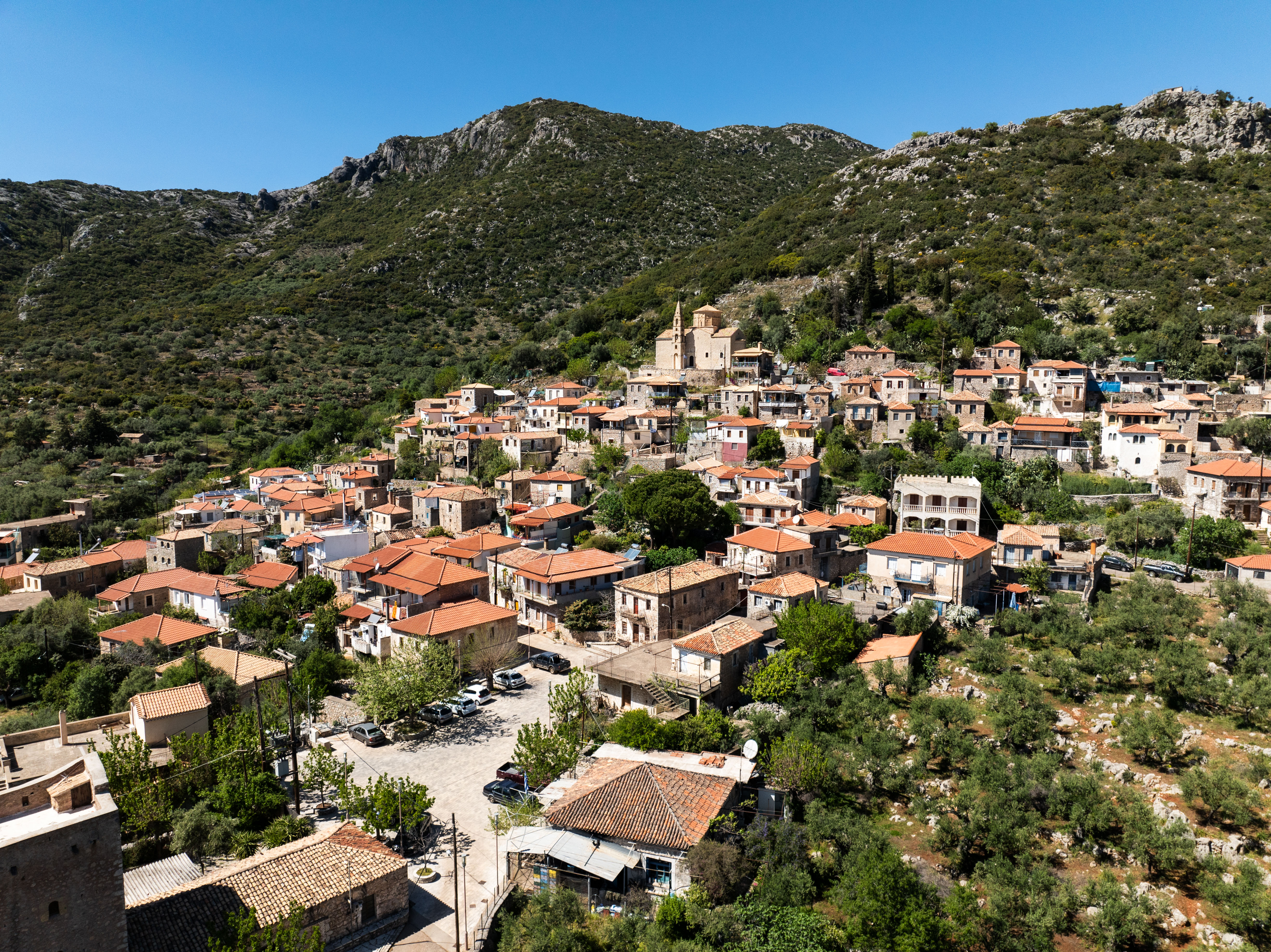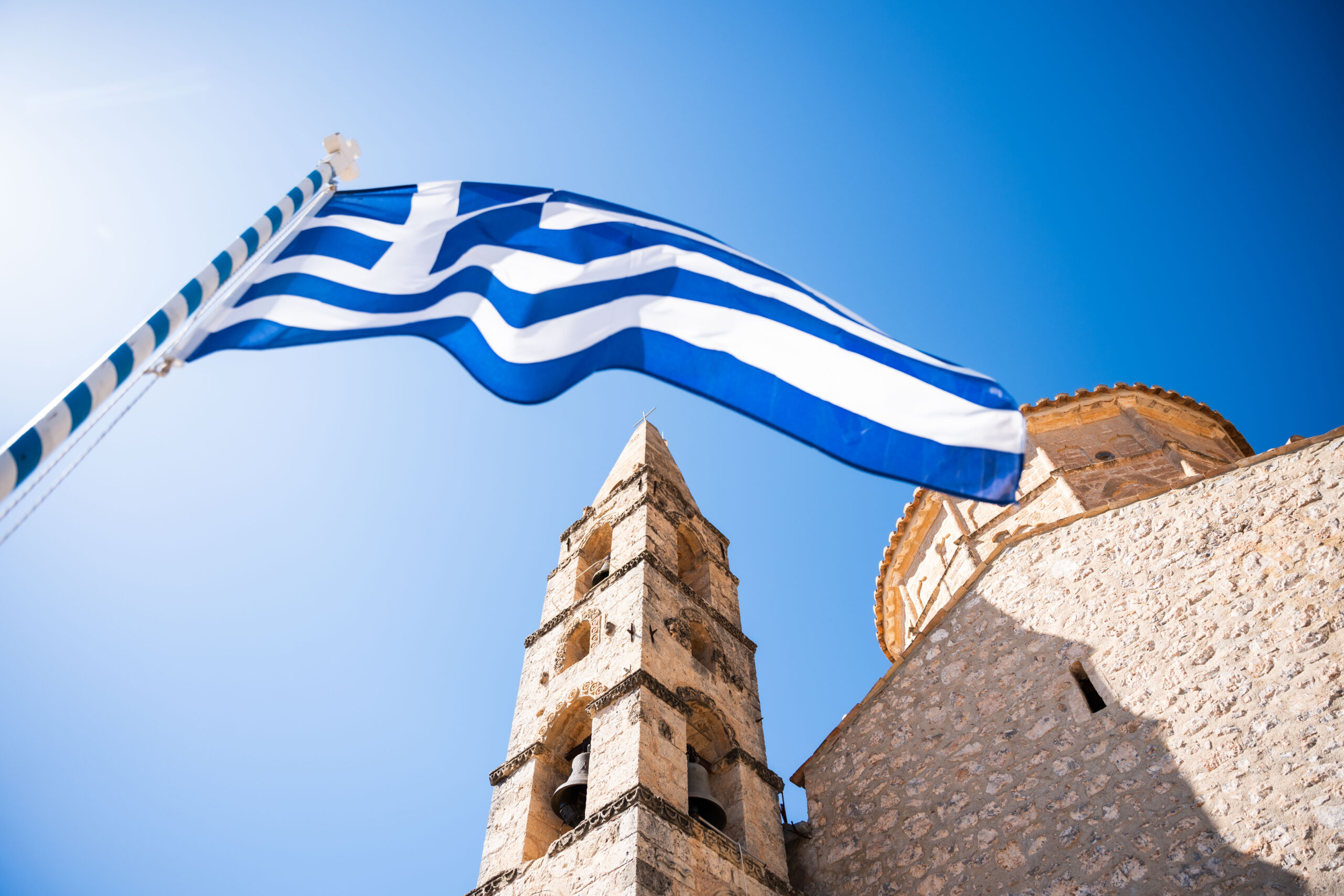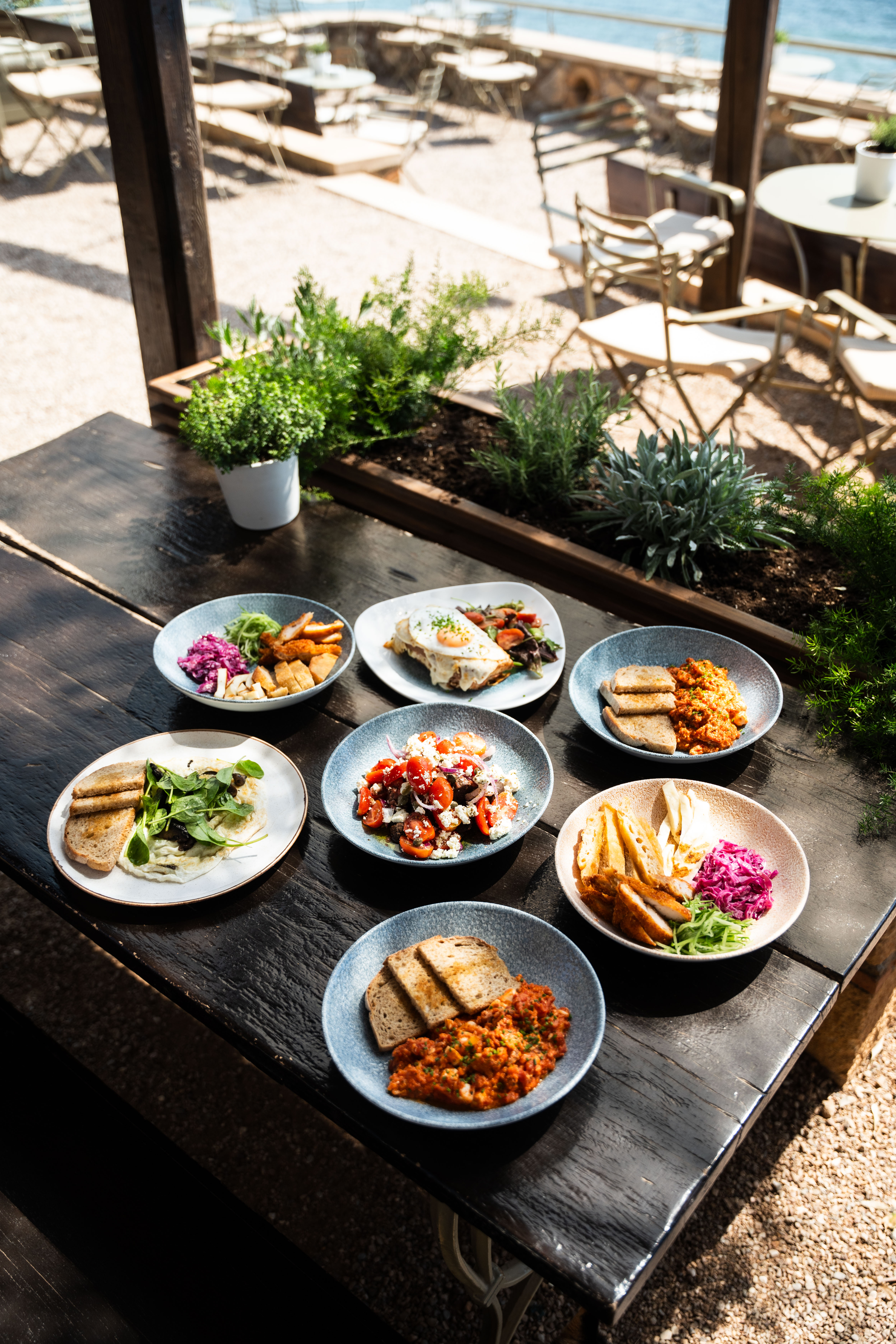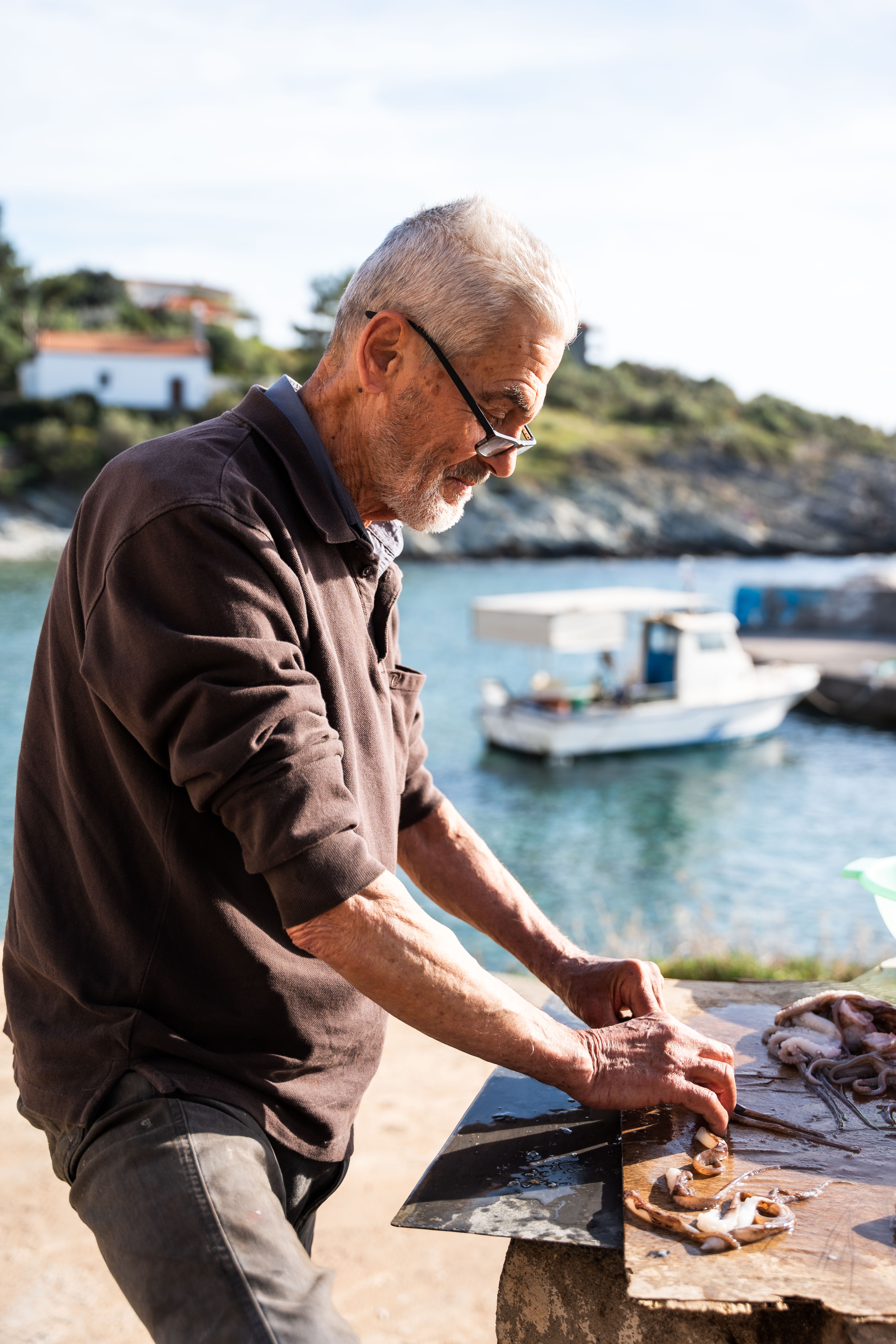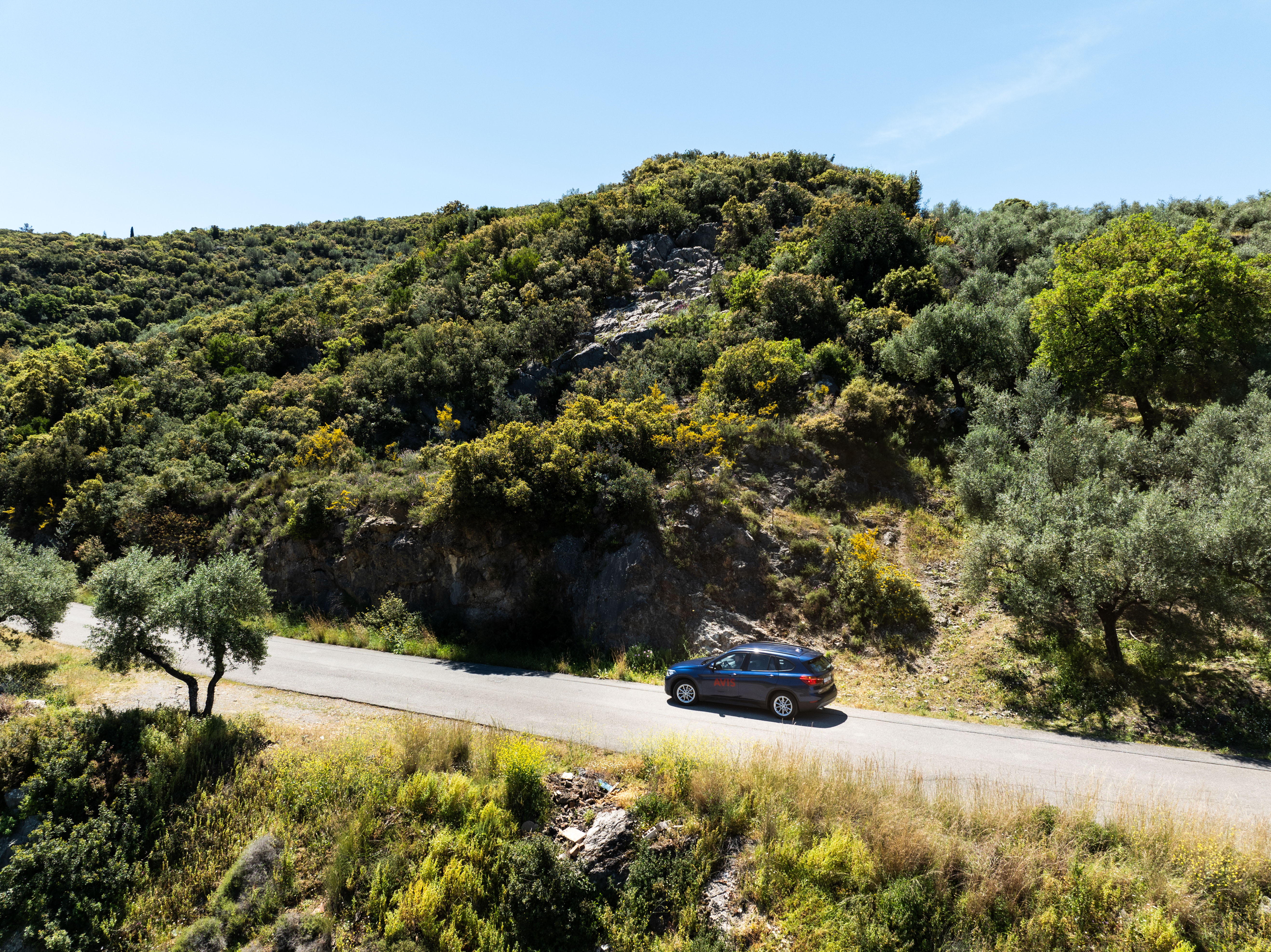Referring to Mani involves distinguishing between the Messenian Mani in the west and the Laconian Mani in the southeast, demarcated by the ridge of the imposing Taygetus mountain range. Geographically situated between the mountainous mass and the Messenian Gulf, Messenian Mani is also known as Aposkieri or Outer Mani, names that hint at lush vegetation and coolness. Our desire to explore this natural landscape led us to plan a three-day road trip for both exploration and relaxation. Although seemingly contradictory, renting a car from Avis, and indeed the right vehicle for the area’s terrain and topography, contributed to the successful realization of our initial plan.
With a plan to cover the entirety of Messenian Mani, which includes several scenic settlements, beaches, scatterings of historical landmarks, and especially, the western side of the charming Taygetus with its gorges and lush slopes, we examined all options. We concluded that Avis offered many alternatives in choosing a car that ensures safety, economical fuel consumption, and comfort. The website offers a wide range of deals, unique choices for all car categories, and additional services that make the journey even more unique.
On the Road to Ridomo Gorge
Our journey began with a free exploration among the mountain villages of Taygetus, heading towards the Ridomo Gorge, which, along with Vyros Gorge, both characteristic ravines of Western Taygetus, is ideal for hiking. The first landmark on our route was the Castle of Zarnata, outside Kampos village, with a distinctive stone tower at the highest point of the hill, a testament to the architectural character of Mani. Traversing a landscape of olive groves and shrubs, we observed villages perched on the slopes, such as Tseria and Leptini, standing like vigilant guardians of the mountainous area in harmonious coexistence with the environment.
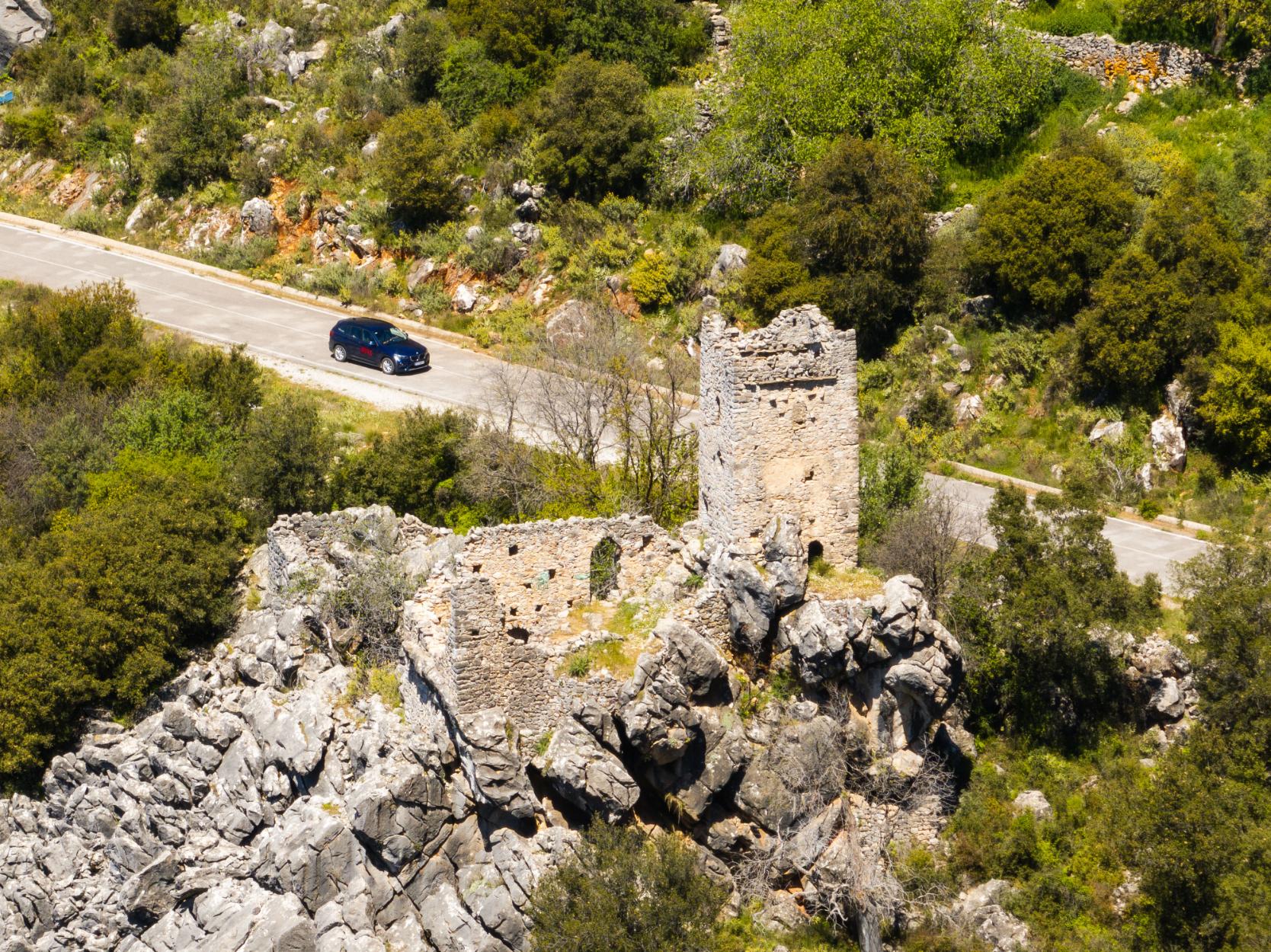
The journey towards the Ridomo Gorge, (not in itself accessible by car), offered a unique viewpoint from above. Despite the challenging road, the approach was relaxing for us, thanks to the safety of our car. As we approached the picturesque village of Chora Gaitson, with its fairy-tale central cobbled street, surrounded by dense vegetation and overlooking the gorge, we marvelled at the grandeur of nature.
Descending from the mountain, we made a brief stop in the village of Prosilio, where we recorded another stone tower as part of our historical exploratory route. The amphitheatrical position of the village with the horizon of the sea in sight fuelled our eagerness to get to our next stop, the seaside village of Kardamyli, which is divided into Old and New.
From Kardamyli to Stoupa
Continuing along on our historical exploratory route, we visited the Mourtzinou-Troupaki Tower in Old Kardamyli, hidden behind the main road of the modern settlement. The Tower is a significant historical landmark synonymous with the heritage of the area. It belonged to a powerful Mani family, with the structure of a defensive complex built in the late 17th century. Inside the fortress stands the church of Saint Spyridon and the Tower, which served as the residence and now functions as a museum, introducing visitors to Maniot architecture and social structure.
The transition from Old to New Kardamyli symbolizes a spatial and temporal continuum. Today, the settlement has evolved into an extremely popular tourist destination with a modern identity, yet it maintains its authenticity and historical character, featuring traditional two-story buildings from the 19th century along the main road. Equally significant tourist development has been seen in the next seaside settlement, Stoupa. Here, two successive coves with fine sand and calm, clear waters dominate, creating a beautiful natural setting. The sunset in front of the serene sea was the most beautiful moment of the day, as its brilliance created a cinematic scene.
The start of our second day included a dip at Kalogria Beach, just before Stoupa. This recognized place of inspiration is connected to Nikos Kazantzakis, who lived there for a period with the protagonist of his novel “Zorba the Greek.” We continued to the Vasiliki Forest, a well-known spot for hiking enthusiasts. We chose to explore it by car, transforming the mapping of another point of Mt Taygetus into a delightful experience thanks to the vehicle’s capabilities. After the village of Saidona, the last on our route, we followed a steep serpentine road, rough with gravel, yet we felt calm due to the car’s resilience. The sight of fir and black pine trees marked our entry into the Forest.
Having reached an altitude of over 1000 meters, we suddenly felt a unique sense of freedom, release, and rejuvenation. We were solitary travelers enjoying the thrilling sights of nature, characterized by rich vegetation and the overlapping peaks of Taygetus stretching infinitely to the horizon, seemingly reaching the peninsula’s edge. The sequence of images and emotions induced inner peace.
Touring the Seaside Villages
In our afternoon journey, we passed through dense olive groves from Stoupa to Agios Nikolaos and then to Agios Dimitrios, with our final stop at the picturesque Trachila, known for its well-preserved two-story stone-built houses. On the reverse route, the brilliant sunlight shone our way, highlighting the rugged rocky formations with vivid red and yellow flowers of the season, ending in the golden waters of the sea. Our attention was captured by a secluded beach with massive stone slabs arranged amphitheatrically, at the Cave of Katafigi. It was the outlet of an underground river traversing the Cave, one of the largest in Greece, but not fully explored.
The Home of Patrick & Joan Leigh Fermor
Our journey’s exploratory character was sealed with a visit to the home of the globally acclaimed traveler, travel writer, and philhellene, Patrick Leigh Fermor. A Greek war hero in the Second World War who dedicated two of his notable literary works entirely to Greece, specifically to Roumeli and Mani, he is an adored figure among Greeks and not only. Fermor chose the Messenian Mani as the place where he chose to settle with his wife, in a well-hidden, densely vegetated location outside Kardamyli. He built his house in the 1960s, and there he wrote many more books and lived a joyful life, with regular accomplished guests coming from around the world to see him. After his death, the property was bequeathed to the Benaki Museum and renovated in a way that preserves its aesthetic. It opens a few days a week for the public to admire both the building, synonymous with the authenticity of its creators, and the enchanting view.
Return and Reflection
Our return included a dip at Foneas Beach, a place whose name intrigued us, but the location captivated us. A short path led us to a quiet cove with white pebbles and a disproportionately large rock at its center. Now refreshed, with strong experiences and impressions from our three-day exploration, we mitigated the feeling of melancholy from our return with a brief reflection on the trip. The contrasting yet thrilling images between the seaside and mountain elements, the historical and architectural heritage, and the authenticity of the place and its people evoke a unique and irresistible charm.
Given the landscape’s peculiarities and the terrain’s difficulties in some mountainous areas, renting an SUV from Avis proved the most suitable choice for thoroughly exploring Messenian Mani. Keeping our constant pursuit of exploring new places, Avis’s offers provide the incentive to continue planning trips with demanding routes.
A Mini Gastronomic Guide
-For breakfast, lunch, or cocktails, visit Aquarella Cafe in Kardamyli.
-For delicious meze, look for the Yalos tavern, also in Kardamyli.
-If you want to try traditional Maniot cheese pie, stop by the Balachtari bakery in Stoupa.
-For the most authentic coffee, visit the Cafe in Agios Dimitrios.
Info:
Mourtzinou-Troupaki Tower: Summer hours, open daily 08:00-20:00, except Tuesday.
Patrick & Joan Leigh Fermor House: Monday and Thursday 11:00-12:00.
The Leigh Fermor House will be closed from 30/4 to 13/5. For visits, pre-purchase of tickets through the Benaki Museum website is required.
Read also:
Haria: A Rustic Charming Lowkey Settlement in Mani



